





Basics of Colorado Criminal Law and Procedure
Introduction – What follows is a discussion of the various types and sources of law (constitutional, statutory, administrative and common law); and step-by-step walkthroughs of the legal procedures followed in typical Colorado criminal trials.
Where Does The Law Come From – The sources of law
The law is really not as mysterious as some people perceive, and it can be broken down into four classifications:
Constitutional law – the fundamental law of the land as spelled out in the Constitution of the United States and state constitutions;
Colorado Statutory law – laws adopted by legislative bodies such as the U.S. Congress, the Colorado General Assembly or a city council;
Administrative law – written rules adopted by various government agencies under limited authority granted by legislative bodies; and
Colorado Common law – a large body of law that has grown out of previous court decisions, customs, and usage, rather than resulting from specific legislation (statutory law).
Constitutional Law
The U.S. Constitution outlines the federal government’s structure and powers and establishes basic law in the United States. Similarly, the Colorado Constitution establishes basic law for the people of Colorado. Should a conflict arise between the state and federal constitutions, the U.S. Constitution takes precedence.
Colorado Statutory Law
Laws written by federal and state legislative authorities are known as statutes. The U.S. Congress enacts those statutes affecting the entire nation, while the Colorado General Assembly enacts Colorado’s statutes. City or village councils enact local laws called ordinances.
Federal laws are compiled in the United States Code and deal with subjects such as the armed forces, bankruptcy, patent law and inter- state commerce. State statutes are compiled in the Colorado Revised Code, and individual cities and villages maintain a code of municipal ordinances.
Under the Colorado Constitution, municipalities (incorporated cities and villages) may adopt laws for their own self-government. These local laws are called ordinances and are adopted by the village or city council, which is the legislative branch of municipal government. Municipal ordinances are effective only within the municipality enacting them and are valid only if they do not conflict with state law.
Administrative Law
Many activities governed by statutes or ordinances are so technical, or change so often or so fast, that they cannot effectively be regulated by statute or ordinance alone. This is where administrative law offers rules and guidance.
The adoption of administrative rules in Colorado involves a detailed set of procedures, which include multiple public hearings. Once adopted, administrative rules carry the same force of law as statutes and can be enforced by the courts. Violating an administrative regulation may be a crime if the corresponding statute or ordinance says it is a crime and creates a penalty.
Colorado’s administrative rules, which cover activities such as hunting, fishing, wildlife management, public recreation, pollution con-trol, sanitation, liquor control, housing, building construction, land use and industrial safety, are found in the Colorado Administrative Code. Many of these activities are also covered by federal administrative rules, most of which can be found in the Code of Federal Regulations.
Colorado Common Law
The common law is a large body of law that has grown out of society’s customs and usage, and out of previous court decisions, customs, and usage, rather than resulting from specific legislation (statutory law). Because it is (and was) created by the courts, common law is a product of judicial rather than legislative power. It fills the gaps and helps unify constitutional, statutory, and administrative law, and it is therefore vital to an effective system of justice.
Based on generations of the natural development of human experience, common law gives continuity and consistency to the law. It also allows the law to respond to the changing needs of society.
When a court decides a case and records its decision in a written opinion, that opinion, or case, becomes a precedent, and the principles on which the case was decided may be used to decide future cases with similar factual situations.
Colorado Legal Procedure
Facts are stubborn things; and whatever may be our wishes our inclinations, or the dictates of our passions, they cannot alter the state of facts and evidence. . James Adams
The law of legal procedure differs from what is known as substantive law. Substantive law (such as criminal law and the law of torts, contracts, probate law, family law, etc.) defines our rights and obligations. Procedural law establishes procedures for enforcing those rights and obligations fairly and efficiently.
The procedural rules governing civil actions and criminal cases are different.
Criminal Actions
Like civil actions, criminal cases follow clearly established procedural rules. However, constitutional and statutory provisions have more control over criminal cases than civil cases, even though both use court-made rules. Here again, several separate stages define the progress of criminal cases.
Stage 1: The government begins the case
A criminal case usually begins with an arrest. If a police officer satisfies a judge or other qualified court official that an alleged offender probably violated that government’s criminal law, the court can issue a warrant directing the officer to arrest that person.
A police officer has authority to arrest a person without a warrant if the officer has probable cause to believe that person committed a crime.
Police officers also can arrest a person without a warrant for any misdemeanor (generally, a less serious offense usually punishable only by a fine or local jail time for six months or less) if the misdemeanor was committed in their presence, or if they have probable cause to believe the crime was committed. Theft, assault, menacing, domestic violence or public indecency are common examples where arrests are made.
When the officer believes that the alleged offender will appear for court proceedings without an arrest, the officer can also issue a summons or citation that directs the person to appear in court.
In minor misdemeanor cases, including minor traffic violations, an officer must issue a citation instead of arresting the accused. When a person is arrested, or served a summons or citation in lieu of arrest, the arresting officer must file a complaint with a court without delay.
Also a grand jury can begin a criminal case by indicting an alleged offender.
A grand jury is made up of citizens who review the information given to them and determine whether a certain individual should be formally charged with committing a certain offense or offenses. An indictment is a formal accusation charging a named person with a specific crime.
Stage 2: Advisement and bail
Advisement
An advisement is a (usually) brief proceeding at which the court confirms that the accused person understands the charge and his or her rights as a defendant. Usually a court advises the defendant very shortly after his or her arrest.
At some advisements – particularly in municipal court , the judge will ask the accused to enter a plea. In some cases, the accused may offer to plead guilty to a lesser offense through a process called plea bargaining. A defendant may accept a plea bargain agreement when he or she has some doubts about his or her chances of winning at trial.
Also at the advisement, the judge will also set bail to ensure the defendant’s appearance at any later proceedings, including a later trial.
Bail
When a person 18 or older is arrested (or when a juvenile court transfers a person under 18 for trial in adult court), he or she is usually entitled to be free on bail pending trial, provided he or she satisfies any conditions imposed by the court. In general, bail is a deposit of money or property with the court, or a promise to pay or forfeit money or property to the court, designed to guarantee that the accused will appear at court for all proceedings.
Stage 3: Preliminary Hearing and Bindover, in felony cases
A person arrested and held for a felony is entitled to a preliminary hearing within 30 days – a short time period. This hearing is held before a county court judge or magistrate, unless the person waives the right to a hearing in writing. The preliminary hearing is not a trial. Its purpose is to allow the court to examine the evidence against the accused and determine if it is su-ficient to warrant further proceedings.
If the judge finds probable cause to believe both that a felony was committed and that the accused committed it, the judge must bind over the accused (transfer the case) to District Court. If the judge finds the evidence supports only a misdemeanor charge, the case will stay in that court.
Stage 4: Pleadings, motions, discovery, and pre-trial / status conferences in criminal cases
Unlike civil cases, the defendant in a criminal case does not file a written pleading (an answer) in response to the charge; the defendant’s oral plea in court serves the same function.
However, when the defendant intends to rely on the defense of alibi, the defendant must file written notice with the court of the place the defendant claims he or she was when the offense occurred. In essence, the defense of alibi states,”I was somewhere else, so I couldn’t have committed the crime.”
There are several requests, challenges and objections the accused can make by filing a written motion asking for relief.
Status conferences are used in criminal cases for discussion of potential evidence problems, for possible plea negotiations, and to confirm the trial date. In a criminal case, the status conference generally involves a review of the evidence, time necessary for trial, whether the complaint and information charges the correct offense, defenses raised, a schedule for the trial and any proceedings before the trial, and the possibility of a plea.
Stage 5: The trial
Like civil trials, the main steps in criminal trials include:
selection of a jury;
opening statements by the attorneys;
presentation of witnesses and evidence (in a criminal trial, the state always goes first, and the defense follows; the state then may offer rebuttal evidence if the prosecutor wishes to do so);
closing arguments by the attorneys;
instructions on the law by the judge to the jury;
and
deliberation and decision (verdict) by the jury.
Burden and standard of proof
In a criminal case, the state must prove the defendant’s guilt beyond a reasonable doubt. This is a much more stringent burden of proof than in a civil case. Reasonable doubt is present when the jurors, after they have carefully considered and compared all the evidence, can-not say they are firmly convinced of the truth of the charge. If jurors believe that the defendant is probably guilty, but have reasonable doubt, they must find the defendant not guilty.
Jury and non-jury cases
While the right to trial by jury applies in many situations, it does not apply in all cases.
Persons accused of minor misdemeanor offenses, where the maximum penalty does notn involve jail are not entitled to a jury trial.
In criminal cases involving serious offenses – where a jail sentence may be imposed, a trial by jury is automatically provided unless the accused waives the right to a jury in writing. Serious offenses include all felonies and those misdemeanors punishable by jail or imprisonment.
When a civil or criminal case is tried without a jury, it is tried to the judge alone. This is commonly called a bench trial.
Juries in criminal cases consist of 12 jurors in felony cases and 6 jurors in misdemeanor cases.
Jury selection
The process of choosing jurors is called voir dire. During voir dire, attorneys for both the plaintiff and the defendant interview potential jurors. In many courts the judge begins a preliminary interviewing process before permitting the attorneys to question prospective jurors. The purpose of voir dire is to select individuals for the jury who can be fair and impartial. Each side in a case can reject potential jurors through a challenge for cause or a peremptory challenge.
Opening statements
After the jury is selected and sworn in, the attorneys for each party make their opening statements, beginning with the prosecutor and followed by the defendant’s attorney. The opening statement is an outline of the facts of the case, what the party expects to prove, and the evidence by which the party expects to prove it.
Witnesses and evidence
The prosecution then presents its evidence, after which the defendant may present any additional evidence. If the defendant presents any evidence, the prosecutor may present rebuttal evidence.
A defendant in a criminal case has no duty to present any evidence. Rather, the state is obligated to prove that the defendant is guilty, whether or not the defendant presents any evidence.
Evidence is almost always presented through witnesses. In fact, witnesses are so important that they can be compelled to attend the trial by means of a subpoena. A subpoena is a court order commanding a witness to appear in court and provide testimony. Anyone who disobeys a subpoena is in contempt of court, and may be fined or jailed, or both.
Witnesses testify about events they saw or heard, report on the tests or investigations they conducted, or testify about other relevant matters. Expert witnesses sometimes are used to give professional opinions about elements of a case. For example, a coroner may testify that a gunshot at close range caused the victim’s death in a murder case. Even tangible evidence, such as a murder weapon or a document, must be introduced through the testimony of a witness.
Evidence may be direct or circumstantial. Direct evidence is evidence that was seen, touched or heard by a witness directly. For example, if a witness sees rain coming down, he or she has direct evidence that it is raining. Circumstantial evidence comes from a reason-able conclusion of fact that a witness infers from direct evidence. The court will not permit the jury to consider evidence that has nothing to do with the case at hand.
One of the judge’s most important functions in a trial is to rule on whether certain evidence is admissible. Generally, a judge will not keep evidence from being heard unless one of the party’s attorneys objects and asks that the evidence be excluded. But the judge carefully considers matters such as this, since the improper admission or exclusion of evidence may be so prejudicial as to affect the outcome of the trial, and cause an appeal to the court of appeals. In criminal cases, the failure by defense counsel to object to improper evidence may result in the reversal of a conviction, based on counsel’s incompetence.
For each witness, the side that calls that witness conducts direct examination. When that side concludes its questions, the other side has a right to cross-examine that witness. The side that called the witness may ask redirect examination questions after any cross-examination, and the judge may then permit either side to ask further questions. The right of cross-examination is considered so important that it is guaranteed in both the U.S. and Colorado constitutions.
The chief purposes of a cross-examination are to place a witness’s testimony in perspective, to test its accuracy and to bring out information not offered during direct examination.
Closing arguments
Once all the evidence has been presented, the attorneys deliver their closing arguments to the jury. The prosecutor goes first, because the prosecution has the burden of proving the case. When the prosecutor is finished, it is the defense attorney’s turn. The prosecutor may reserve part of his or her time for rebuttal after the defense attorney is finished.
Jury instructions
When the attorneys have completed their closing arguments, the judge instructs or charges the jury. This means the judge explains to the jury their duties as members of a jury and the law applicable to the case.
Verdict
After the judge charges the jury, the jurors are escorted to the jury room to make their decision or verdict. Once inside the jury room, the jury selects a foreperson to make sure that the discussions are orderly and that each juror gets ample time to speak, and to report to the judge in the courtroom. Once a foreperson is selected, the jury begins deliberations about the facts of the case.
The bailiff is outside the jury room and allows no one to enter or leave the room without the express permission of the judge. Sometimes the jury’s deliberations go on for several days.
In such cases, the jurors may be allowed to go home for the night with an order to return the following day to resume deliberations. Or, in certain high-profile cases, the jury may be sequestered, that is, housed at a local hotel under the supervision of the court bailiff, with security provided by deputy sheriffs. In a capital murder case, the jurors will be sequestered if they are unable to reach a verdict by the end of the day. In all cases, the jurors are told not to discuss the case with anyone until after the verdict is announced in court. Even then, the jurors have no obligation to discuss the case with anyone else.
Usually, the court will give jurors written forms for each of the possible verdicts in the case. In a criminal case, the verdict must be unanimous. In many cases, the court may give the jury detailed information about specific questions (known as interrogatories) pertaining to the case.
On rare occasions, the jury becomes hopelessly deadlocked when the jurors cannot agree on a decision. This is called a hung jury, and if the judge is convinced that they will not be able to reach a verdict, the judge declares a mistrial. The case may have to be retried with a new jury, unless the prosecutor decides to dismiss it. If the jurors agree on a decision, they will sign the appropriate verdict form and return to the court-room where the verdict is announced either by the judge, by the jury foreperson, by the clerk of the court, or by the court bailiff.
Stage 6: Sentencing and motions after the trial
Sentencing in criminal cases
In criminal cases, the sentence is part of the judgment. In minor criminal cases, sentencing usually takes place immediately following a jury verdict of guilty or the judge’s finding that the offender is guilty. In serious criminal cases, sentencing is often deferred pending a pre-sentence investigation to gather information on the case and on the offender’s background. The judge can then determine the proper sentence according to sentencing guidelines established by the Colorado legislature.
Proceedings after the trial
Following a conviction, the defendant may file a motion for a new trial or for a judgment notwithstanding the verdict (a judgment that sets aside the jury’s guilty verdict in favor of a judgment for the defendant).
Appeal
In criminal cases, a person who is convicted may appeal, but the state’s (prosecution’s) right of appeal is very limited because of the constitu-tional protection against double jeopardy. In general, double jeopardy means a person cannot be tried or punished more than once for the same offense.
Other post-trial proceedings
In criminal cases, there are other proceedings that may be held months or years after the trial, including court hearings to determine if community control sanctions should be revoked, or if a parole violator should be returned to prison. Also, the trial court may hold a post-conviction relief proceeding to determine the validity of late claims that the offenderfs constitutional rights were violated.
What Constitutes Criminal Offense?
In Colorado, all crimes must be defined by state statute or local ordinance. Statutes and ordinances (commonly referred to as laws) must also provide penalties for committing crimes.
There are varying degrees of criminal offenses, ranging from jaywalking to premeditated murder.
In Colorado and most other jurisdictions, two things are required for an act or omission to qualify as a criminal offense. First, the law must prohibit the unlawful act or conduct, or there must be a failure to perform some duty required by the law. (This is called actus reus, or guilty act.) Second, at the time of the unlawful act, conduct, or omission, the person committing the offense must have a certain guilty state of mind, or culpable mental state (in Latin, mens rea).
Depending on the specific crime with which an offender is charged, it must be shown that he or she:
acted in a reckless manner; or
acted with purpose or knowledge; or
acted with criminal negligence.
With few exceptions, for an act or omission to be considered a crime, at least one of these culpable mental states must be present.
Kinds of Crimes
There are two major classifications of crimes: felonies and misdemeanors. Both felonies and misdemeanors are further classified according to the comparative seriousness of the offense, with crimes of the first degree generally representing the most serious. Some crimes are simply defined as felonies or misdemeanors without being classified by degree.
Felonies are the most serious crimes and, in Colorado, they carry a potential penalty of from six months or more in a state prison to a penalty of death for murder. Punishment for felons (persons committing felonies) may include imprisonment, community sanctions and various financial penalties.
Under certain circumstances, felony offenders can serve time in local jails or on probation or in community based correctional facilities ( half way houses); however, most violent or repeat offenders are housed in state prisons.
Misdemeanors are less serious than felonies. They range from speeding and littering to drunk driving and simple assault (with minimal harm). In Colorado, the penalty for a misdemeanor can range from payment of court costs to no more than 24 months in jail and/or a fine of $5,000 per offense.
In addition, the penalty may include community based sanctions such as probation or community service. In fact, the penalty for most misdemeanants (persons committing misdemeanors) involves community and financial sanctions rather than jail time.
More Information:
- In Colorado The Police Entered My House In A Domestic Violence Case Without A Search Warrant – The Protective Sweep
- Colorado Criminal Appeals – When You Lose In Colorado County Court
- Colorado Criminal Law – Patient – Psychologist Confidentiality – What If The Patient Makes A Threat?
- Colorado Criminal Lawyer Series – When Can You NOT Trust Your Lawyer?
- Colorado Pardon And Clemency Law – A Long Shot
- Understanding The Right to a Colorado Preliminary Hearing






















